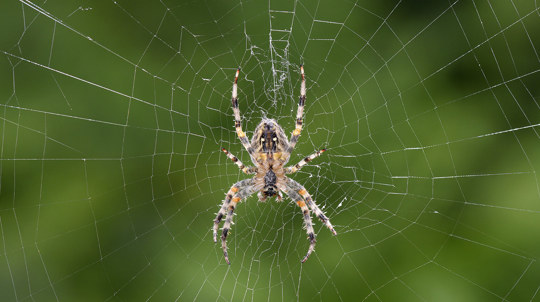The garden spider rebuilds its web every day or so – a process which takes just 30 minutes!
UK spider identification: 10 common species

Digital Content Manager
More often met with fear than fascination, spiders are some of the most misunderstood of all wild creatures. But don’t let the eight eyes and legs fool you – even the most common UK spiders are beautiful, interesting and crucial for the health of our woods and wildlife.
Take a look at our guide to 10 common species that should help get you started with UK spider identification.
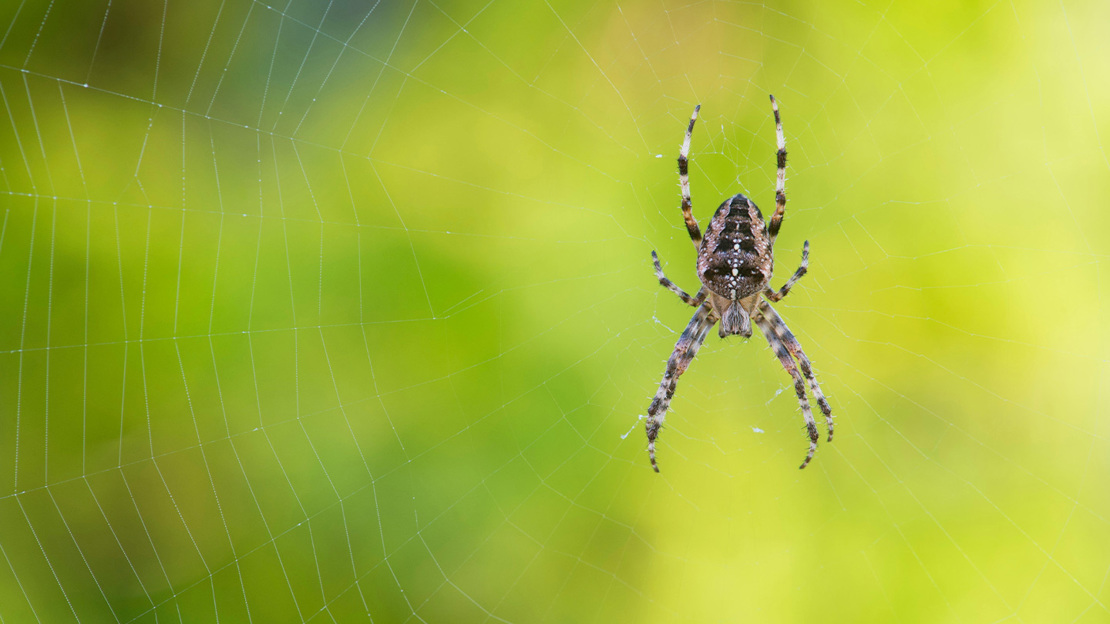
1. Garden spider (Araneus diadematus)
Also known as the cross-orb weaver, the garden spider has a distinctive pattern of white markings that form a cross-like shape on its abdomen. It can vary in body colour from a pale straw to a deep reddish chestnut. It’s usually around 4–8mm (males) or 10–18mm (females) in size and is one of the most common spiders in the UK, living everywhere from woodlands to meadows as well as our gardens.
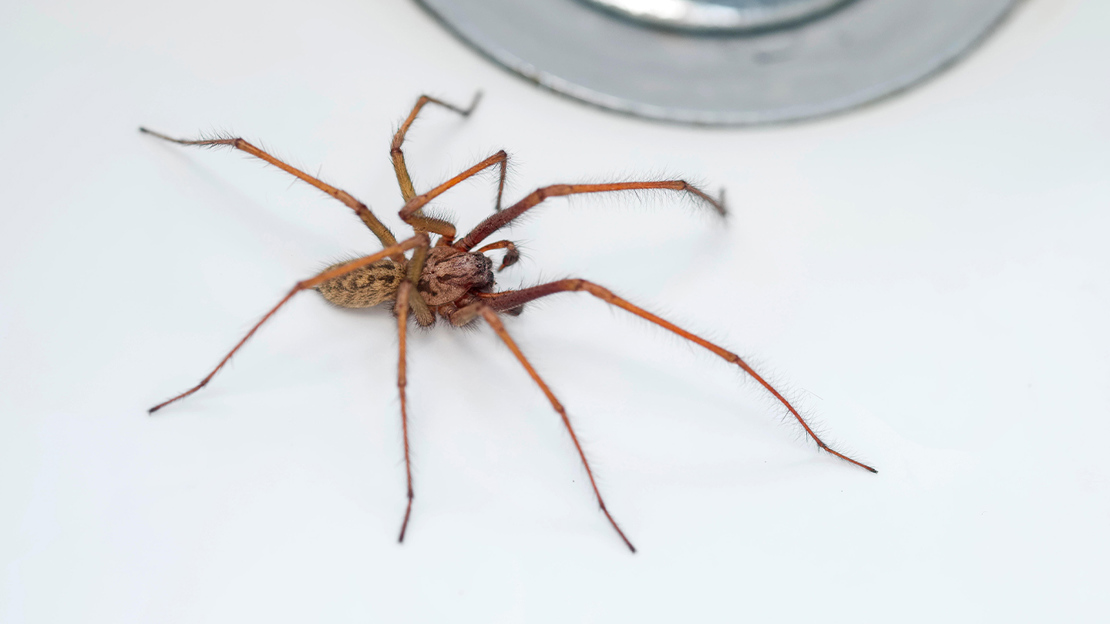
2. Giant house spider (Tegenaria gigantea)
This gentle giant is the spider you’re most likely to find in your home. It’s also one of our fastest invertebrates, running up to half a metre per second on legs that can span up to 75mm. It’s usually brown, with a dark herringbone pattern on its abdomen.
The huge females dwell year-round in the darker, dustier corners of our homes, sheds and other buildings, while the males live outside until autumn. When autumn arrives, they venture indoors in the mood for the love. This is what’s known as spider season in the UK, when you’ll often spot male house spiders sprinting across your living room floor on the hunt for a mate.
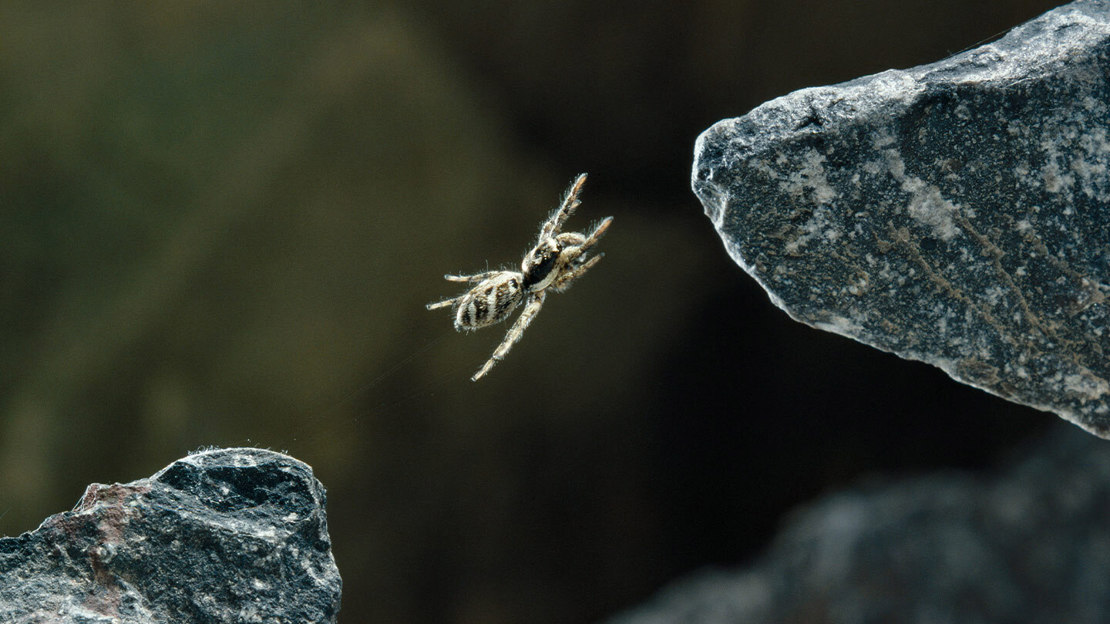
The zebra jumping spider attaches a line of silk to its perch and reels it out as it jumps. If it doesn’t make it, the spider uses the silk to clamber back to its starting point – much like a bungee jump!
3. Zebra jumping spider (Salticus scenicus)
Measuring in at just 5–6mm (males) or 5–7mm (females), the zebra jumping spider is a tiny arachnid that makes up for its small stature with stunning black and white, zebra-like stripes. You can also identify it by its behaviour – resting on sun-bathed walls and fences before inching jerkily towards its chosen prey, then pouncing. Despite its size, this spider can leap up to 10cm and take down prey several times its own size!
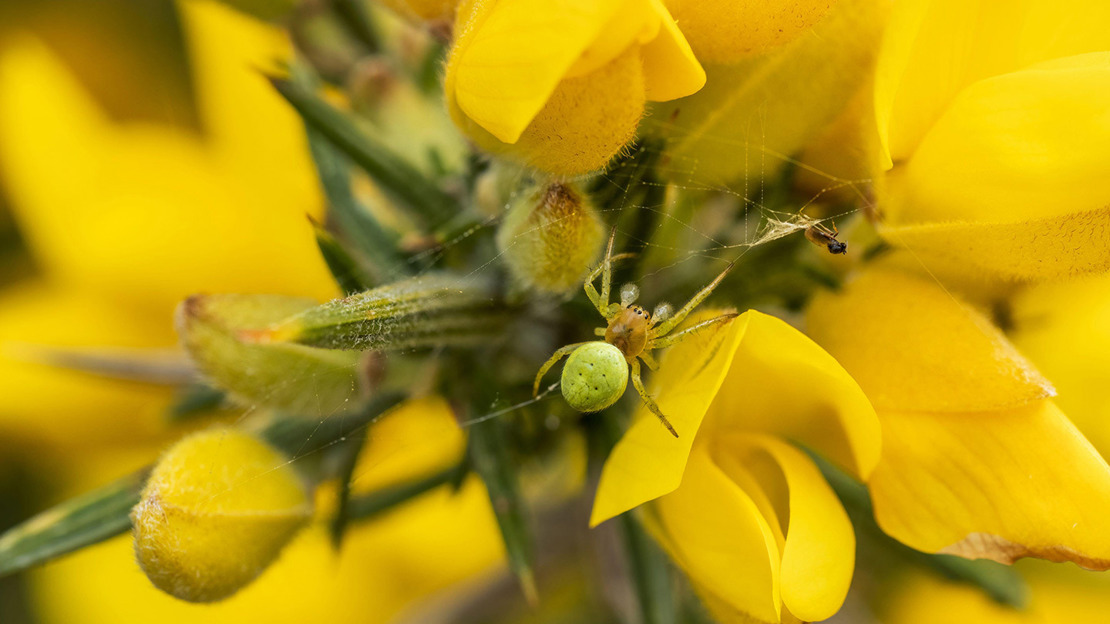
4. Cucumber spider (Araniella species)
These bright and beautiful spiders might look exotic, but they’re one of the most common spiders in the UK. At just 3.5–4mm (males) or 4–6mm (females), they spin small webs amongst the foliage along woodland edges and hedgerows to catch flying insects, blending into the background thanks to their green abdomen and yellow-brown upper body.
There are five different species of cucumber spider in the UK, but they look so similar they often need to be distinguished under a microscope.
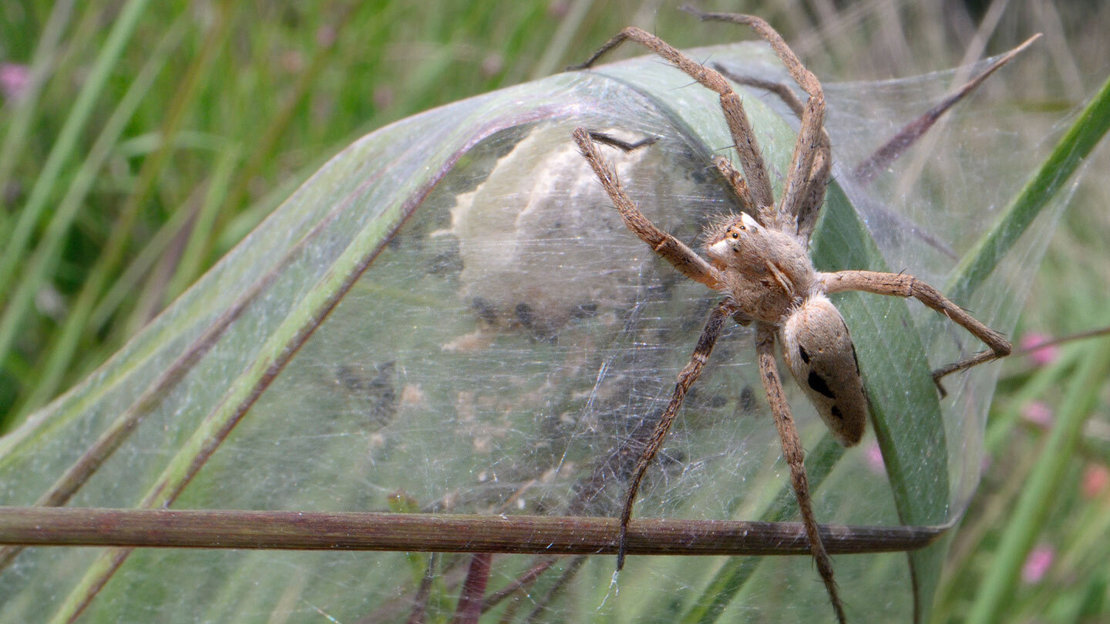
The nursery web spider gets its name because the female builds a silk nursery for her young. She carries her egg sac with her until the spiderlings hatch into the nursery, then stands guard outside.
5. Nursery web spider (Pisaura mirabilis)
This common spider is usually found in long grass and dense vegetation, where it hunts prey including flies and other small insects using speed and strength. It ranges from 10–13mm (males) or 12–15mm (females) in size and can vary in colour from a muted grey to dark orange and brown. It’s most easily recognised by its shape and posture – it has a slender abdomen and likes to rest with two pairs of its front legs pointing forwards. There’s also usually a pale, vertical line down the centre of its abdomen and pale ‘tear marks’ at the sides of its eyes.
Identify minibeasts
Explore woodland creepy crawlies, from bugs and beetles to snails and spiders, with a pocket-sized swatch book.
Buy it now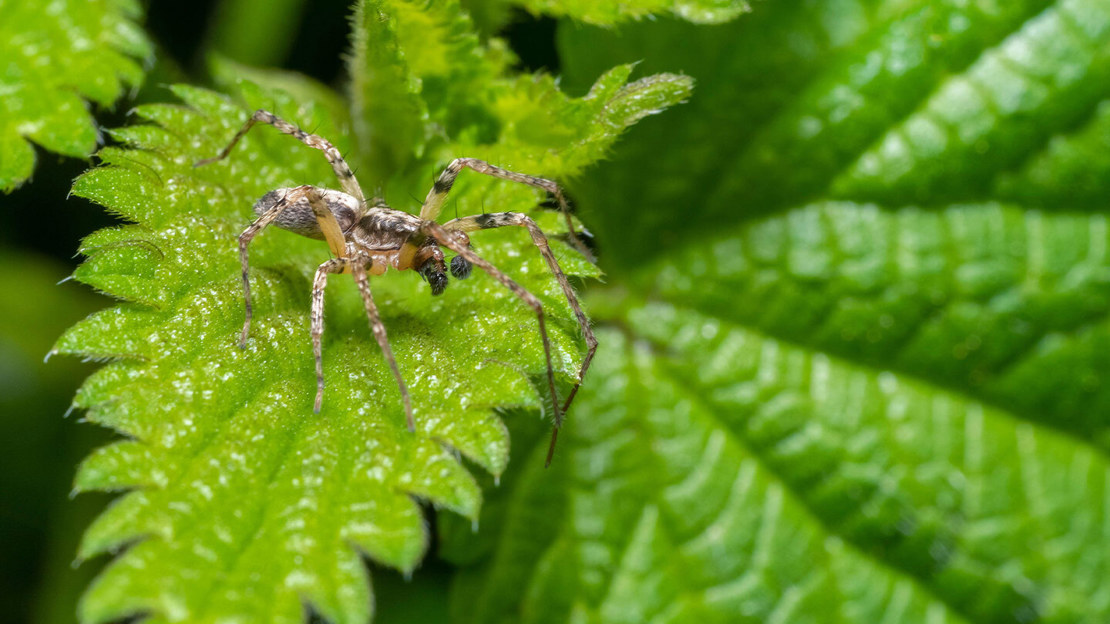
6. Buzzing spider (Anyphaena accentuata)
If you spot this leaf lover perched on a tree or shrub in your local wood, listen out! Male buzzing spiders create an audible buzzing sound by vibrating their bodies against leaves to attract females.
The buzzing spider is easy to identify – pale brown, with two distinctive, dark brown chevron markings on its abdomen. It’s also tiny, measuring in at just 4.5–7mm.
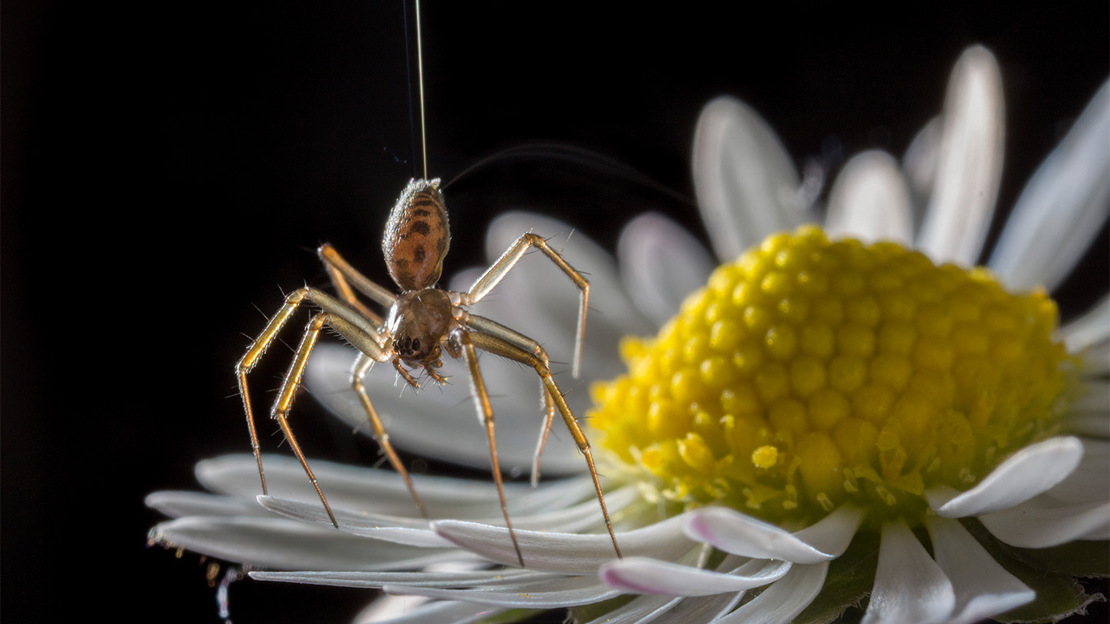
7. Money spider (Linyphiidae family)
The name 'money spider' is given to around 280 species in the Linyphiidae family. This tiny spider is usually black or brown with an egg-shaped abdomen and measures in at around 3.8mm. It lives in a whole range of places including cracks in the soil in gardens and meadows, and up in the branches of trees and shrubs in parks and woodlands.
The money spider is most famous for taking flight in a behaviour called ballooning. It crawls to a high vantage point, releases several strands of silk and, once they’re caught by the breeze, lets go of its perch and is carried into the air. Most of these flights are short-lived, but the spider can sometimes be lifted into the jet stream and survive a trip of thousands of kilometres!
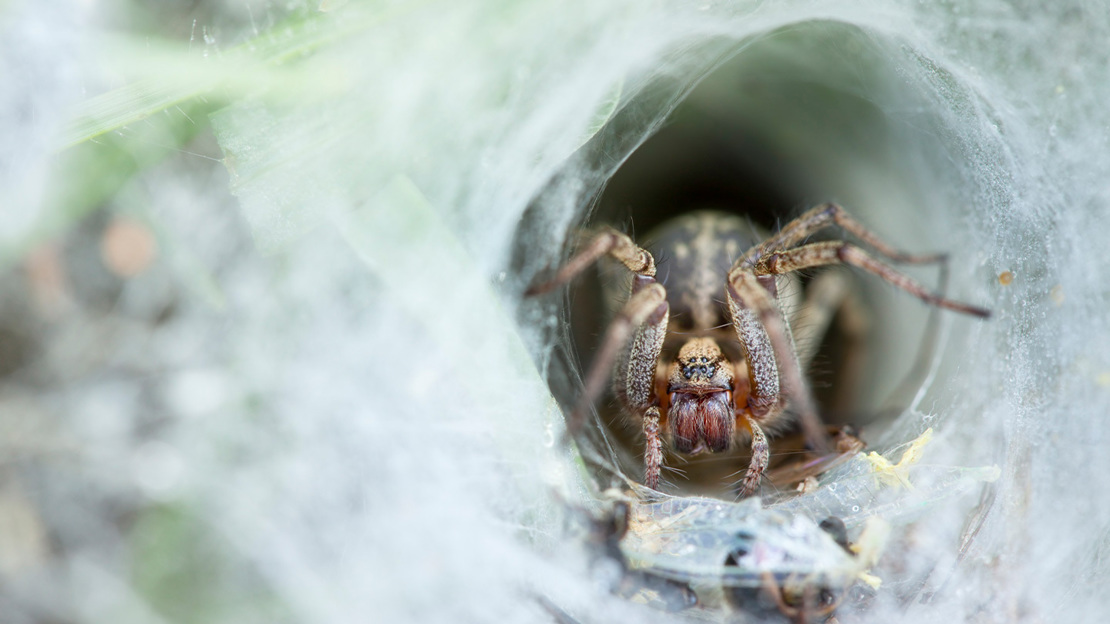
Labyrinth spider webs are so strong and thick that 16th century monks in the Austrian Alps would layer them together to create tiny canvases for religious miniatures.
8. Labyrinth spider (Agelena labyrinthica)
This spider gets its name from the labyrinthine tunnels and passages within its funnel-like web system. The funnel is densely spun so it can survive a kicking from the grasshoppers and crickets which the labyrinth spider feeds on. The spider itself is around 18mm in size and has a pale brown central stripe on a dark abdomen, with white chevron markings running down either side. It’s more common in southern England than elsewhere in the UK and spins its web in long, rough grass, hedgerows and low down on trees.
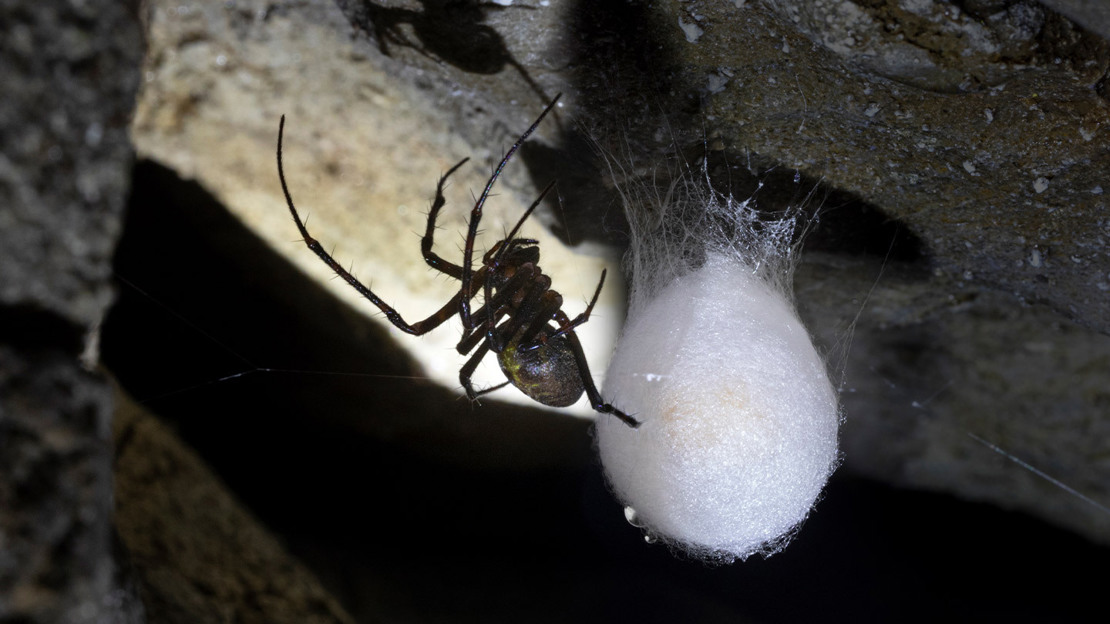
9. Cave spider (Meta menardi)
This shadow dweller is found across the UK but is rarely seen due to its unusual living situation. As its name suggests, the cave spider lives in dark, damp places like caves, mines, sewers and railway tunnels. It’s also been found living in hollow oak tree trunks in ancient woodlands.
The cave spider is usually a black to reddish-brown colour, with a paler abdomen patterned with dark splotches. It measures from 10–15mm and is an impressive engineer, producing teardrop-shaped egg sacs which hang, suspended on silk, from the ceiling of their chosen hideout. Unlike adult cave spiders, which are repelled by light, the spiderlings are actually attracted to it, an adaptation which helps them to disperse and colonise new areas.
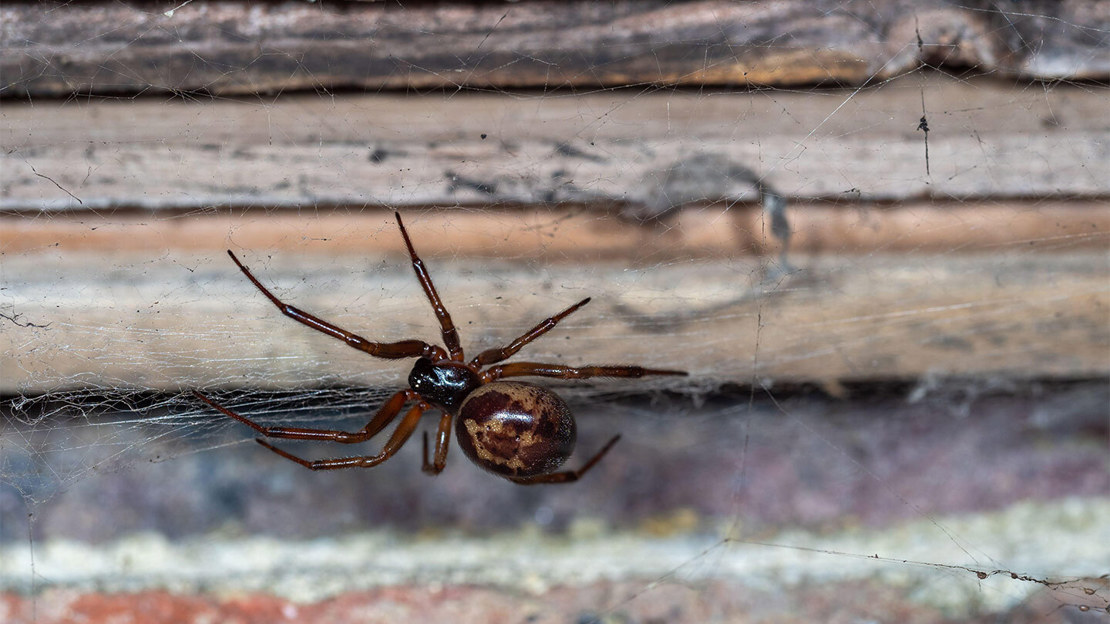
10. Noble false widow spider (Steatoda nobilis)
There are three common species of false widow spider in the UK – the others are the rabbit hutch spider and cupboard spider. Growing from 7–10mm (males) or 8.5–14mm (females), the noble false widow is the largest of the three. It has a dark, shiny abdomen with a pale skull-shaped pattern and is thought to have been introduced to the UK in the 1800s, in shipments from the Canary Islands and Madeira. Its web is a tangle of threads – perfect for catching flying insects – and usually hangs 1.5 metres off the ground in the corners of kitchens and conservatories.
Are false widow spiders dangerous?
False widow spiders have a bad reputation but aren’t aggressive, and their weak venom isn’t dangerous for humans. Confirmed bites are incredibly rare and only occur when the spider is handled roughly by accident – for example, when caught under your hand. The bite is usually no worse than a wasp sting.


